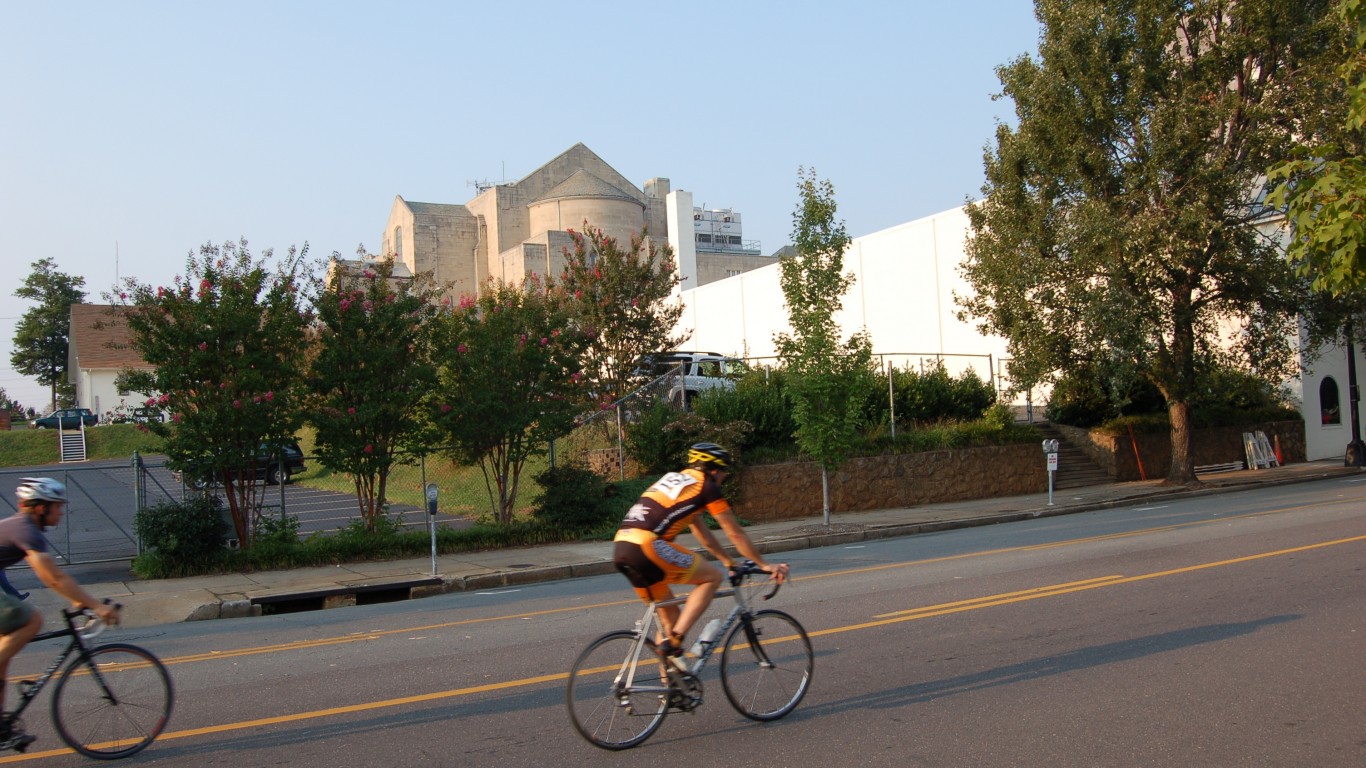
Since the COVID-19 pandemic began, tens of millions of people have been working from home, which means they don’t have to commute to offices or other workplaces, and also that they may have changed their exercise and recreation habits.
Cycling has been a major beneficiary of these trends. It’s a great form of exercise, it offers an escape from the home, and it’s a very practical means of transportation. At rush hour bikes move faster than cars on gridlocked streets. Here are America’s worst cities to drive in.
Cycling is also far kinder to the environment than driving, or even using public transportation — which many have been avoiding during the pandemic anyway. These are 30 easy ways to be more environmentally friendly.
24/7 Tempo has compiled a list of the worst cities for bike riders. They’re typically mid-sized cities, although many have seen rapid growth in the last couple of decades, and suburban sprawl may be a factor in their rankings. (Our list of the best cities for bike riders includes much larger ones, such as New York and Chicago.) Almost all the worst cities are in the South and West; only one — Chesapeake, Virginia — is on the Eastern Seaboard.
Click here to see the worst cities to ride a bike
To identify the worst cities for bike riders, 24/7 Tempo reviewed the Bike Scores of the 100 largest cities in the United States from apartment search services company Walkscore. We also considered the percentage of commuters who use a bicycle to travel to work, as well as the total population of each of the cities, using data from the U.S. Census Bureau’s 2019 American Community Survey.
Some states fare worse than others in the ranking. North Carolina is almost in a class of its own, with no less than six cities on the list: Durham, Raleigh, Greensboro, Charlotte, Fayetteville, and the first-ranked Winston-Salem. The reason certainly isn’t poverty and lack of resources: North Carolina is home to the Research Triangle and its leading universities. If people and politicians there want to make their cities more bike-friendly, the pandemic could present an opportunity.
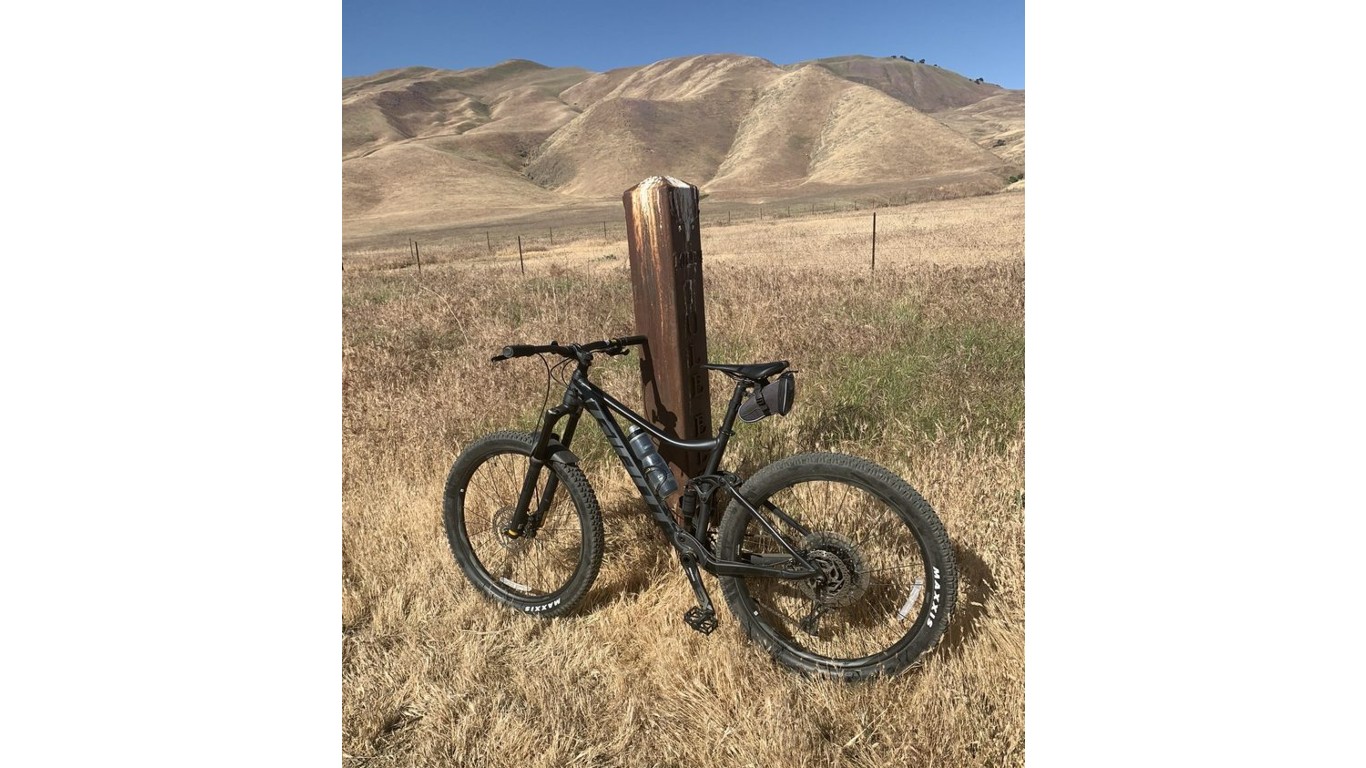
25. Bakersfield, California
> Bike score: 43.7
> Commuters who travel to work by bike: 0.4% — #66 out of 100 largest cities
> Population: 377,917
[in-text-ad]
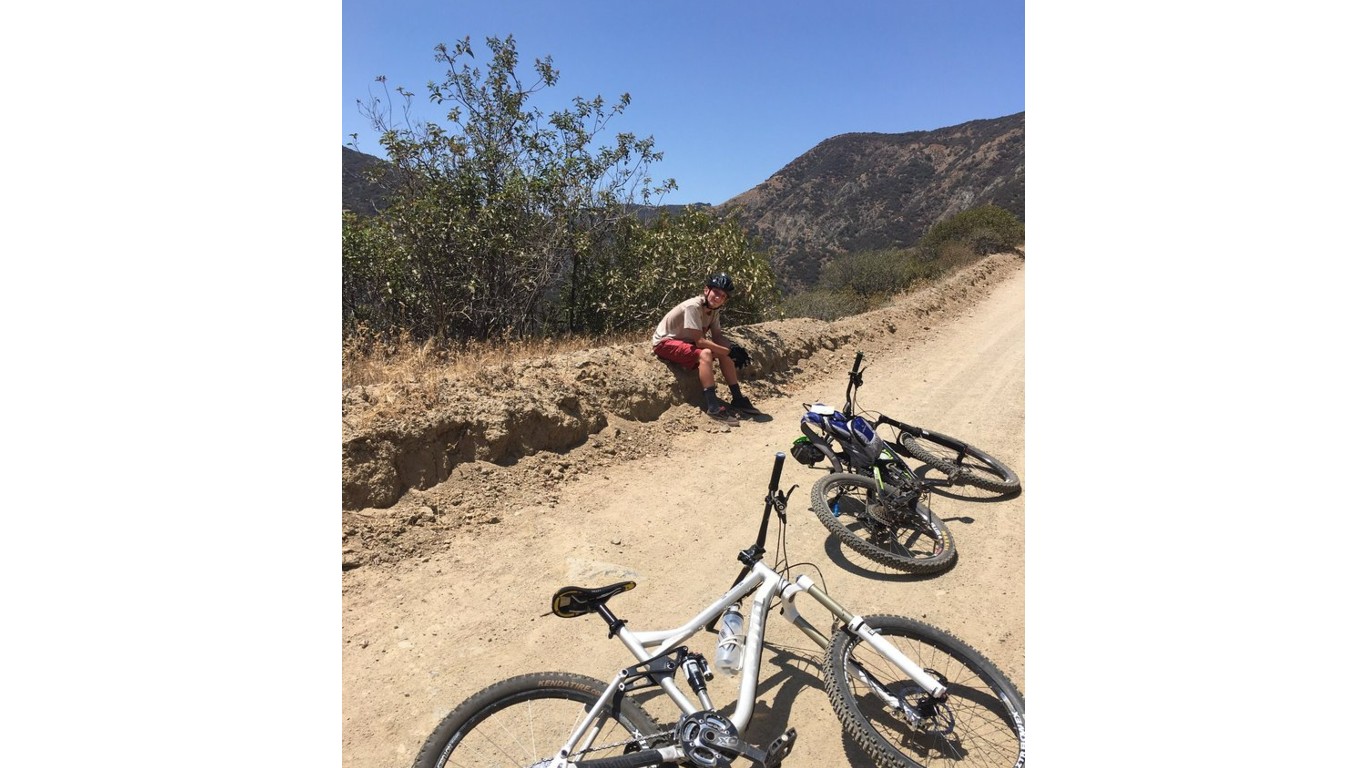
24. San Bernardino, California
> Bike score: 43.6
> Commuters who travel to work by bike: 0.4% — #66 out of 100 largest cities
> Population: 216,089
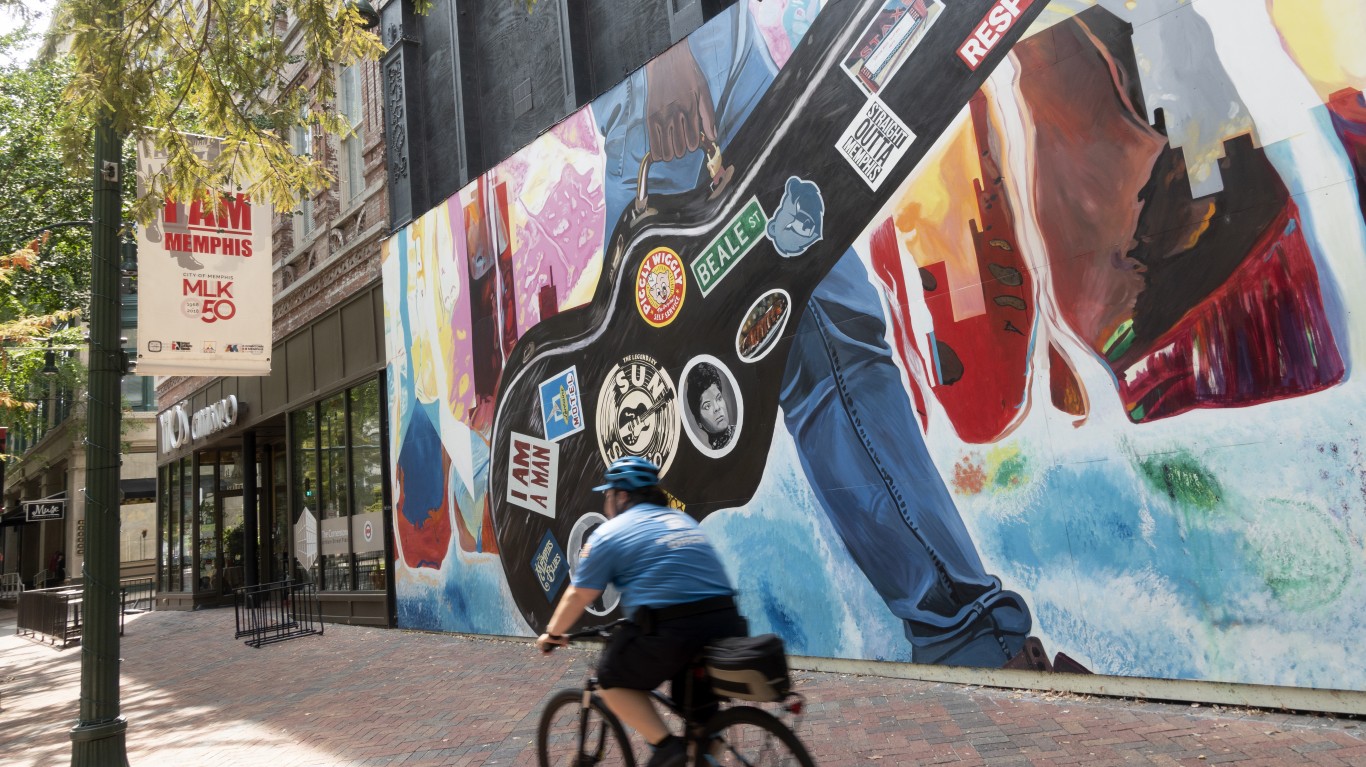
23. Memphis, Tennessee
> Bike score: 43.6
> Commuters who travel to work by bike: 0.2% — #85 out of 100 largest cities
> Population: 651,932
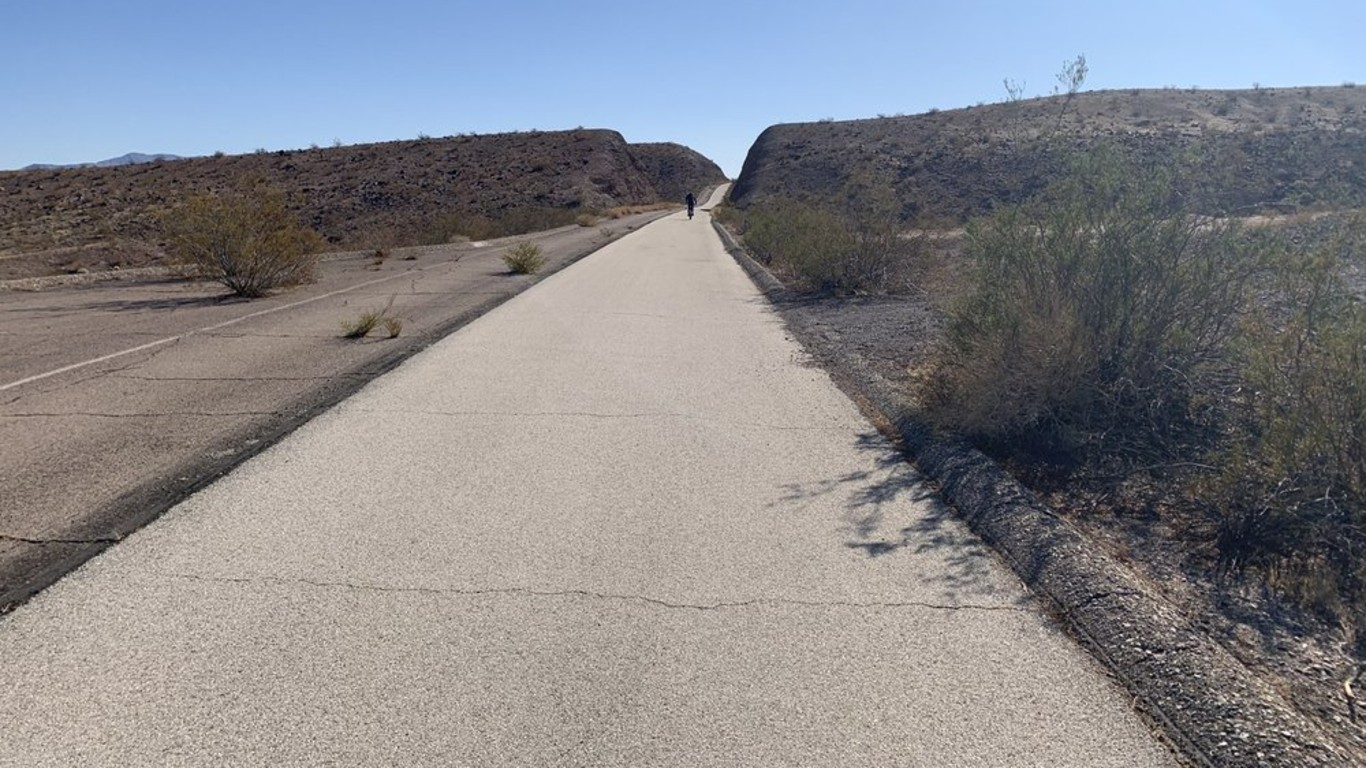
22. Henderson, Nevada
> Bike score: 43.5
> Commuters who travel to work by bike: 0.2% — #85 out of 100 largest cities
> Population: 300,116
[in-text-ad-2]
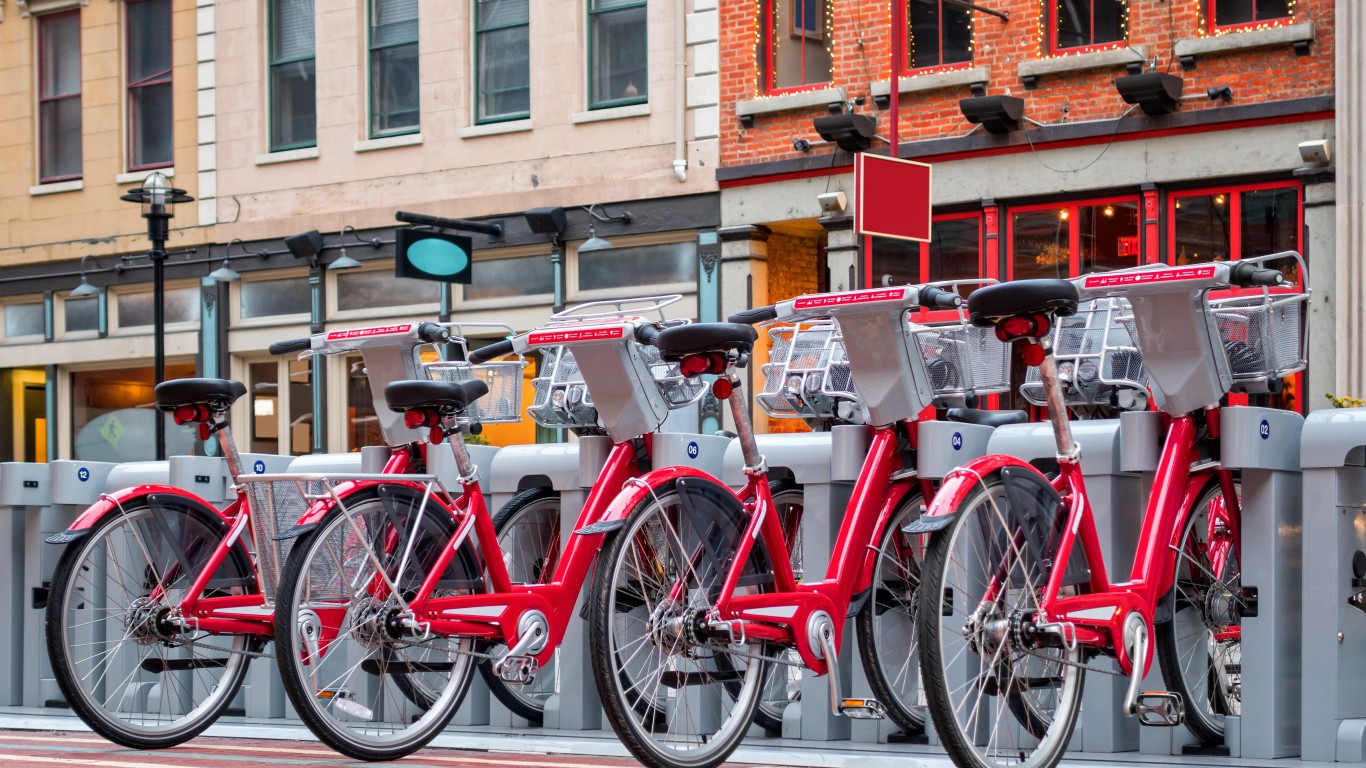
21. Cincinnati, Ohio
> Bike score: 43.3
> Commuters who travel to work by bike: 0.4% — #66 out of 100 largest cities
> Population: 301,394
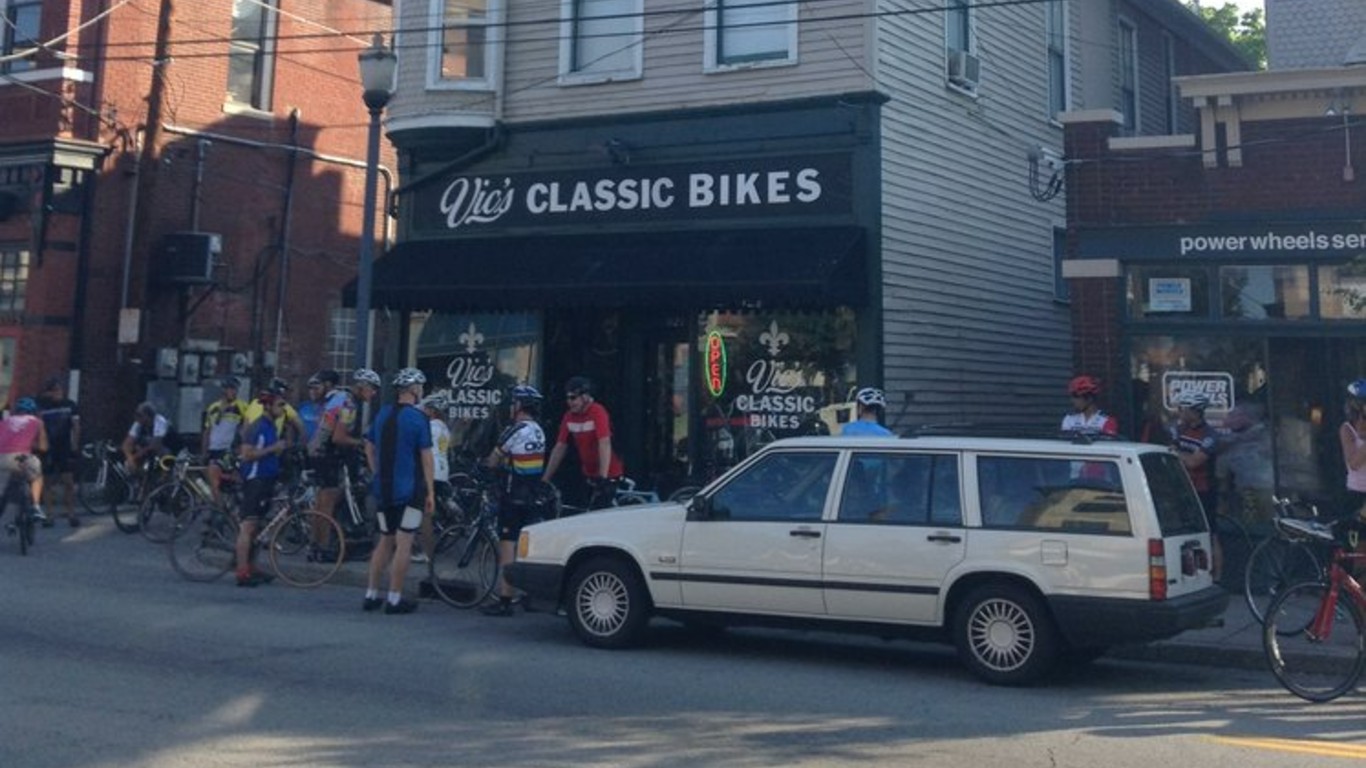
20. Louisville-Jefferson, Kentucky
> Bike score: 43.3
> Commuters who travel to work by bike: 0.4% — #66 out of 100 largest cities
> Population: 617,790
[in-text-ad]
19. Oklahoma City, Oklahoma
> Bike score: 43.2
> Commuters who travel to work by bike: 0.1% — #102 out of 100 largest cities
> Population: 643,692
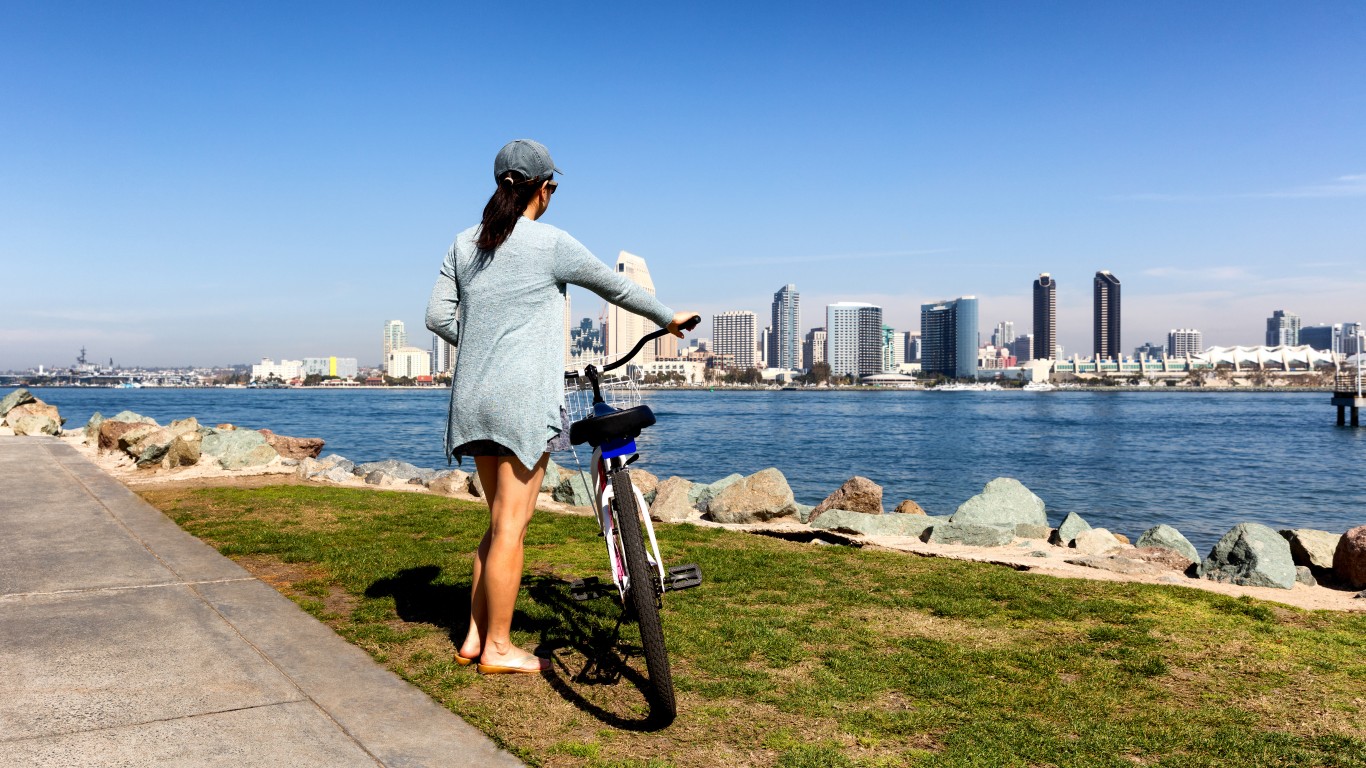
18. San Diego, California
> Bike score: 43.0
> Commuters who travel to work by bike: 0.8% — #37 out of 100 largest cities
> Population: 1,409,573
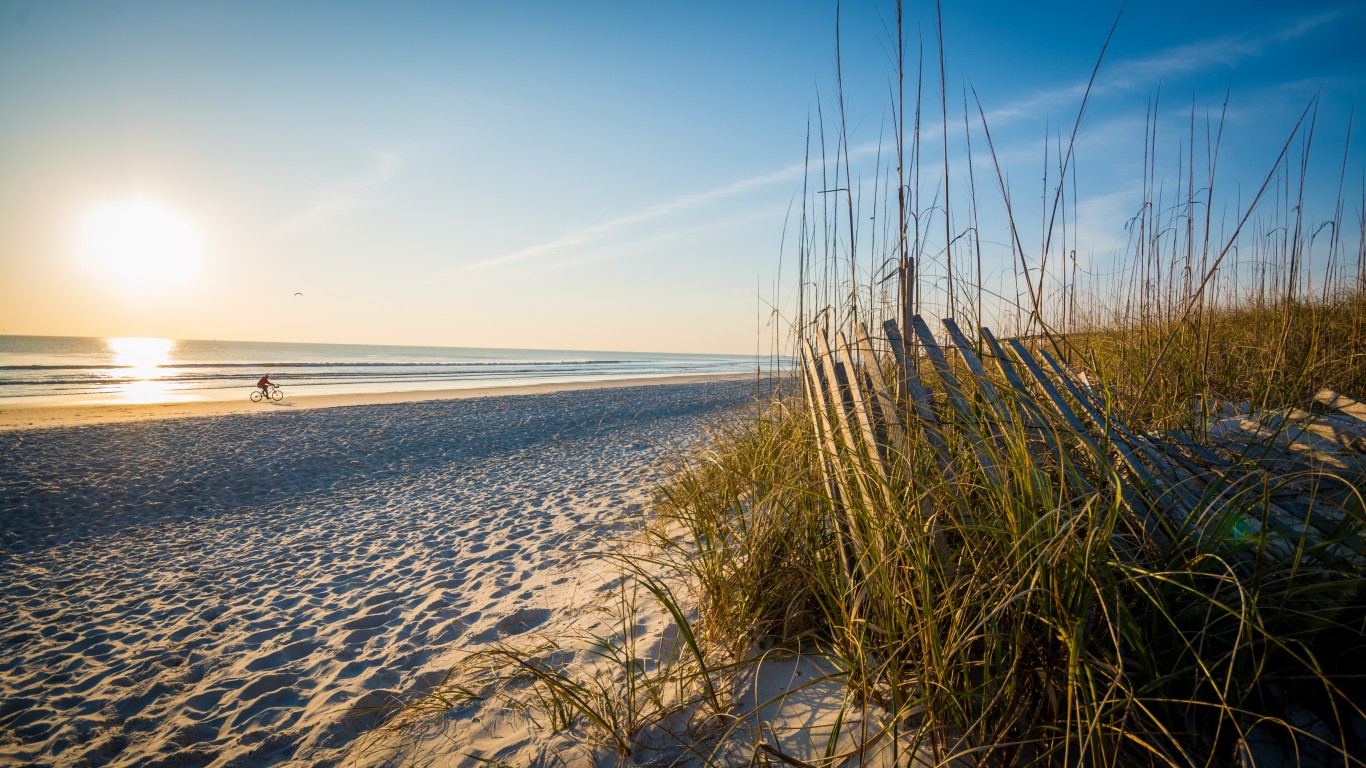
17. Jacksonville, Florida
> Bike score: 42.7
> Commuters who travel to work by bike: 0.5% — #62 out of 100 largest cities
> Population: 890,467
[in-text-ad-2]
16. El Paso, Texas
> Bike score: 42.0
> Commuters who travel to work by bike: 0.2% — #85 out of 100 largest cities
> Population: 679,813
15. Des Moines, Iowa
> Bike score: 41.7
> Commuters who travel to work by bike: 0.4% — #66 out of 100 largest cities
> Population: 215,636
[in-text-ad]
14. Durham, North Carolina
> Bike score: 41.4
> Commuters who travel to work by bike: 0.6% — #50 out of 100 largest cities
> Population: 269,702
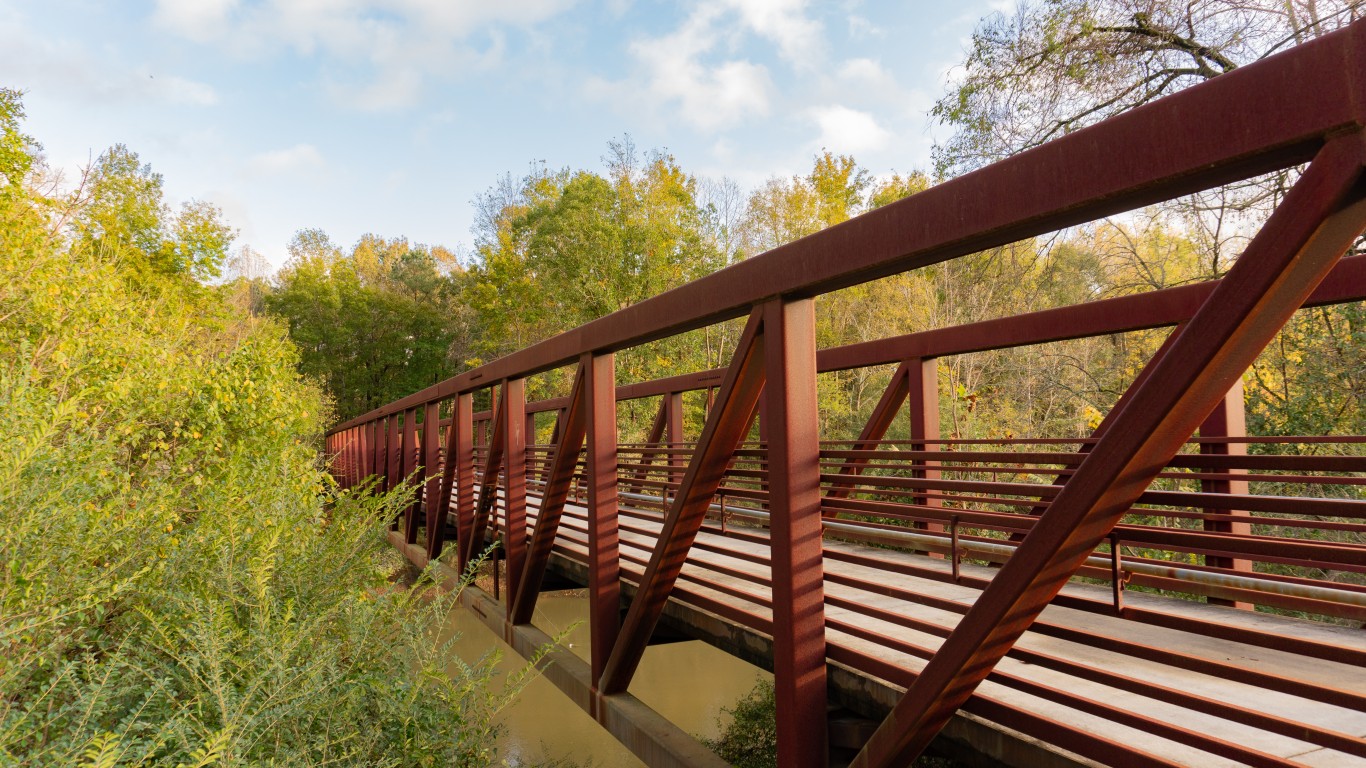
13. Raleigh, North Carolina
> Bike score: 41.3
> Commuters who travel to work by bike: 0.4% — #66 out of 100 largest cities
> Population: 464,485
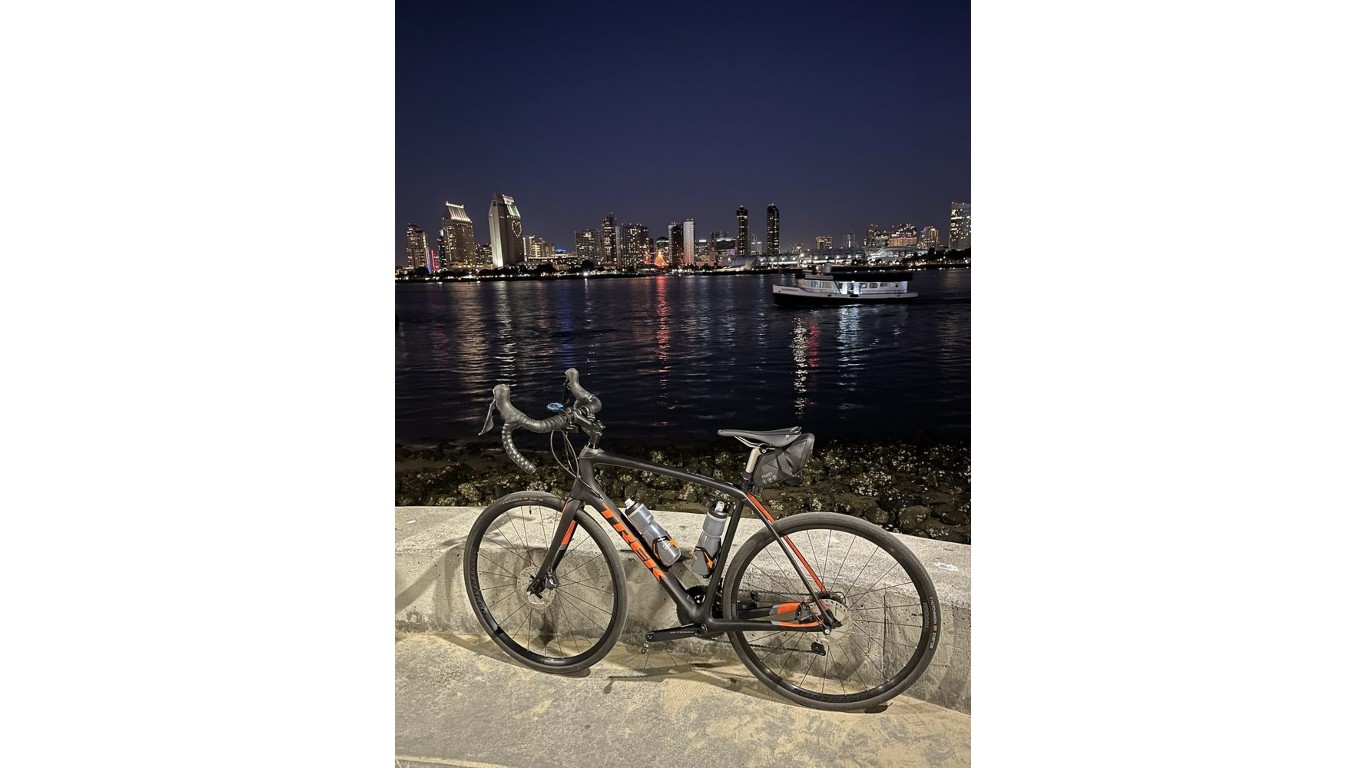
12. Chula Vista, California
> Bike score: 41.2
> Commuters who travel to work by bike: 0.2% — #85 out of 100 largest cities
> Population: 268,920
[in-text-ad-2]
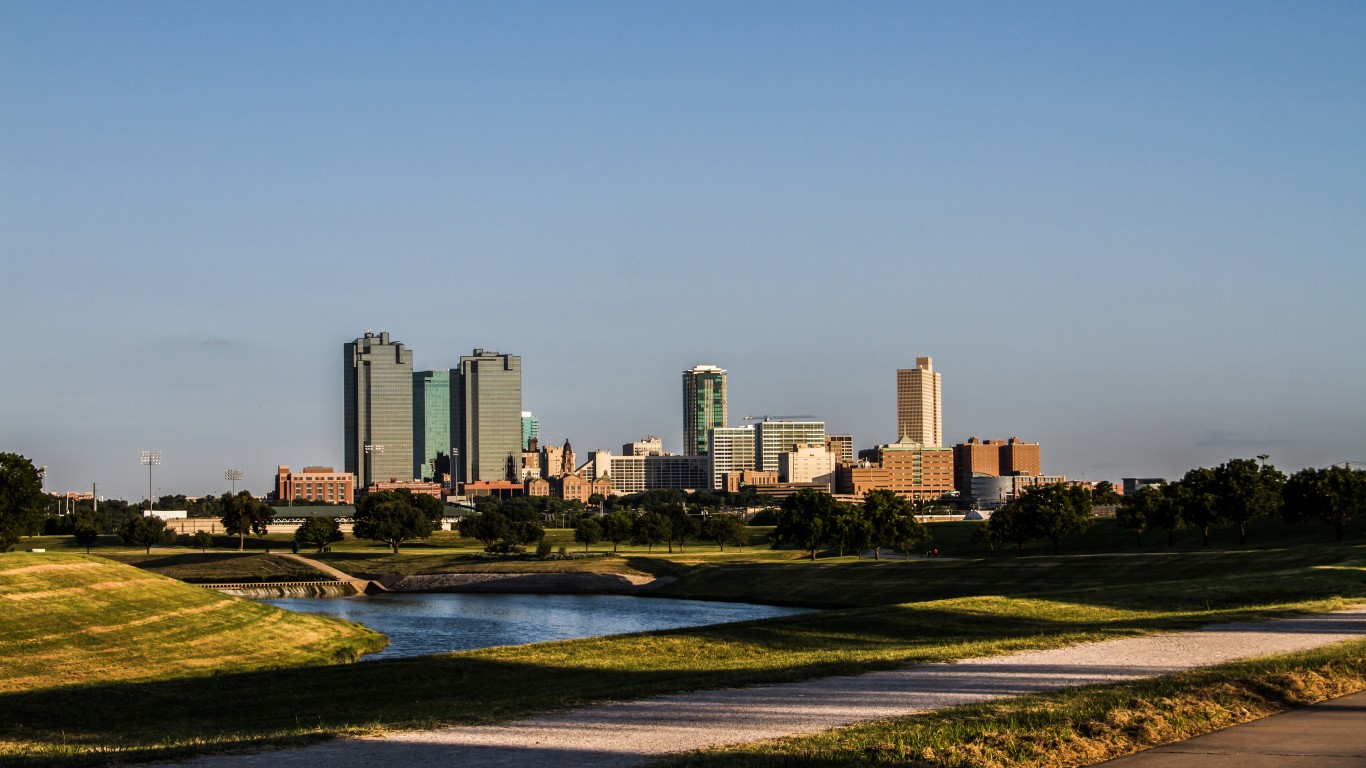
11. Fort Worth, Texas
> Bike score: 41.1
> Commuters who travel to work by bike: 0.2% — #85 out of 100 largest cities
> Population: 874,401
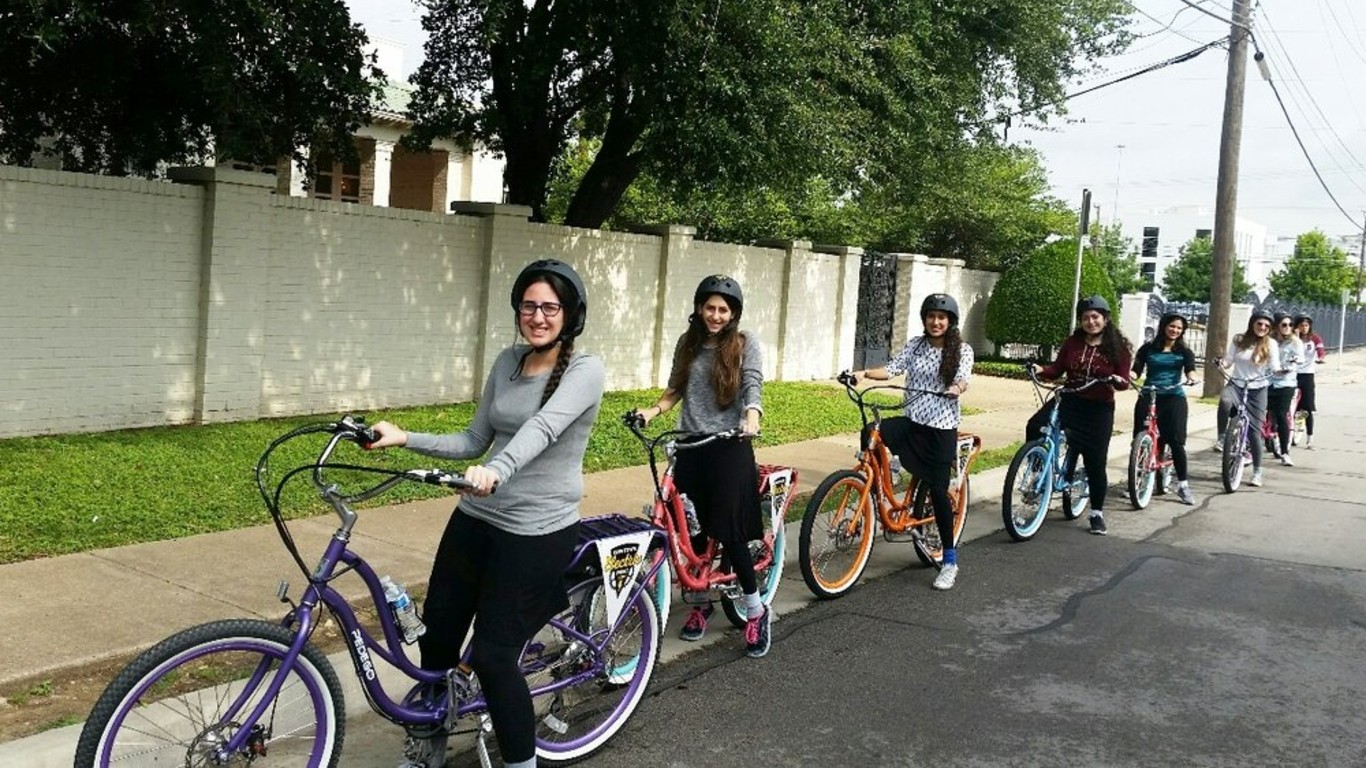
10. Arlington, Texas
> Bike score: 41.0
> Commuters who travel to work by bike: 0.2% — #85 out of 100 largest cities
> Population: 395,477
[in-text-ad]
9. Chesapeake, Virginia
> Bike score: 40.3
> Commuters who travel to work by bike: 0.1% — #102 out of 100 largest cities
> Population: 239,982
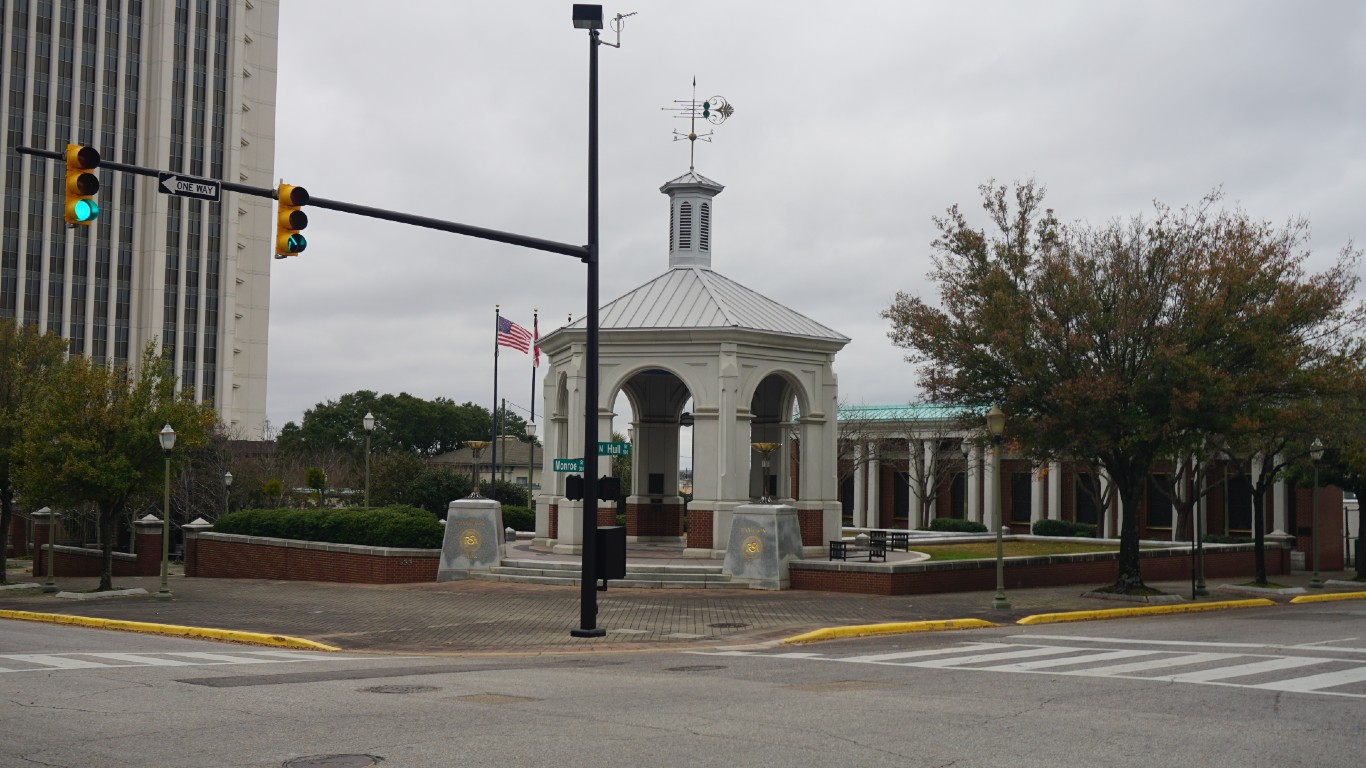
8. Montgomery, Alabama
> Bike score: 38.3
> Commuters who travel to work by bike: 0.1% — #102 out of 100 largest cities
> Population: 199,783
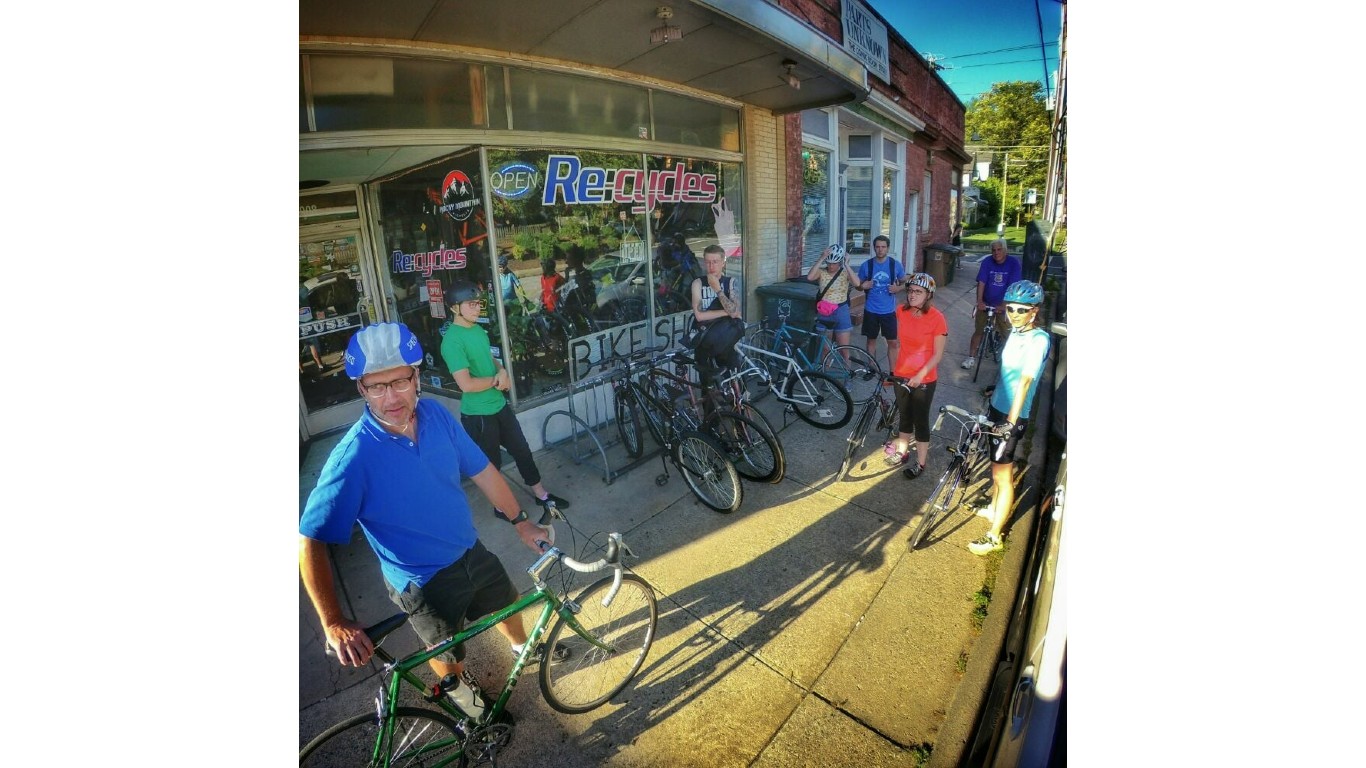
7. Greensboro, North Carolina
> Bike score: 35.2
> Commuters who travel to work by bike: 0.2% — #85 out of 100 largest cities
> Population: 291,303
[in-text-ad-2]

6. Kansas City, Missouri
> Bike score: 35.0
> Commuters who travel to work by bike: 0.2% — #85 out of 100 largest cities
> Population: 486,404
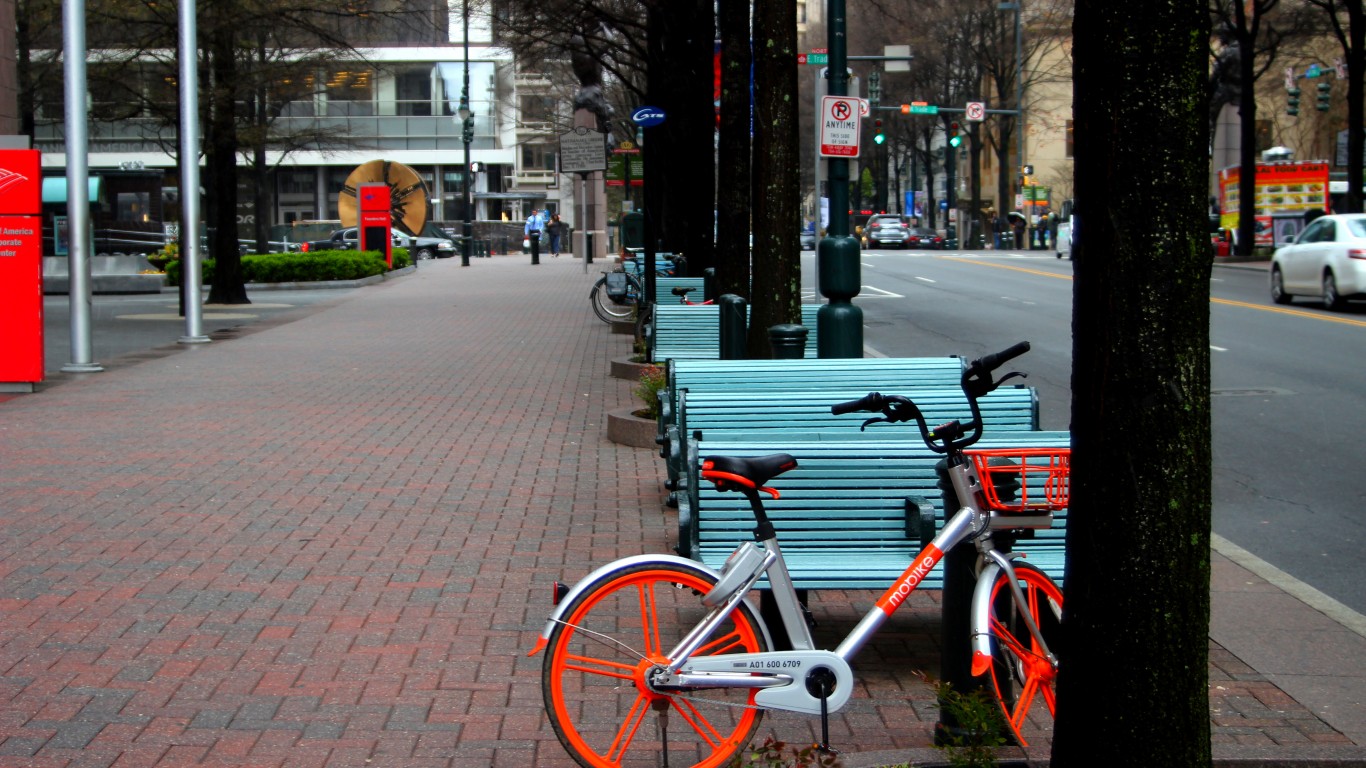
5. Charlotte, North Carolina
> Bike score: 33.9
> Commuters who travel to work by bike: 0.1% — #102 out of 100 largest cities
> Population: 857,425
[in-text-ad]
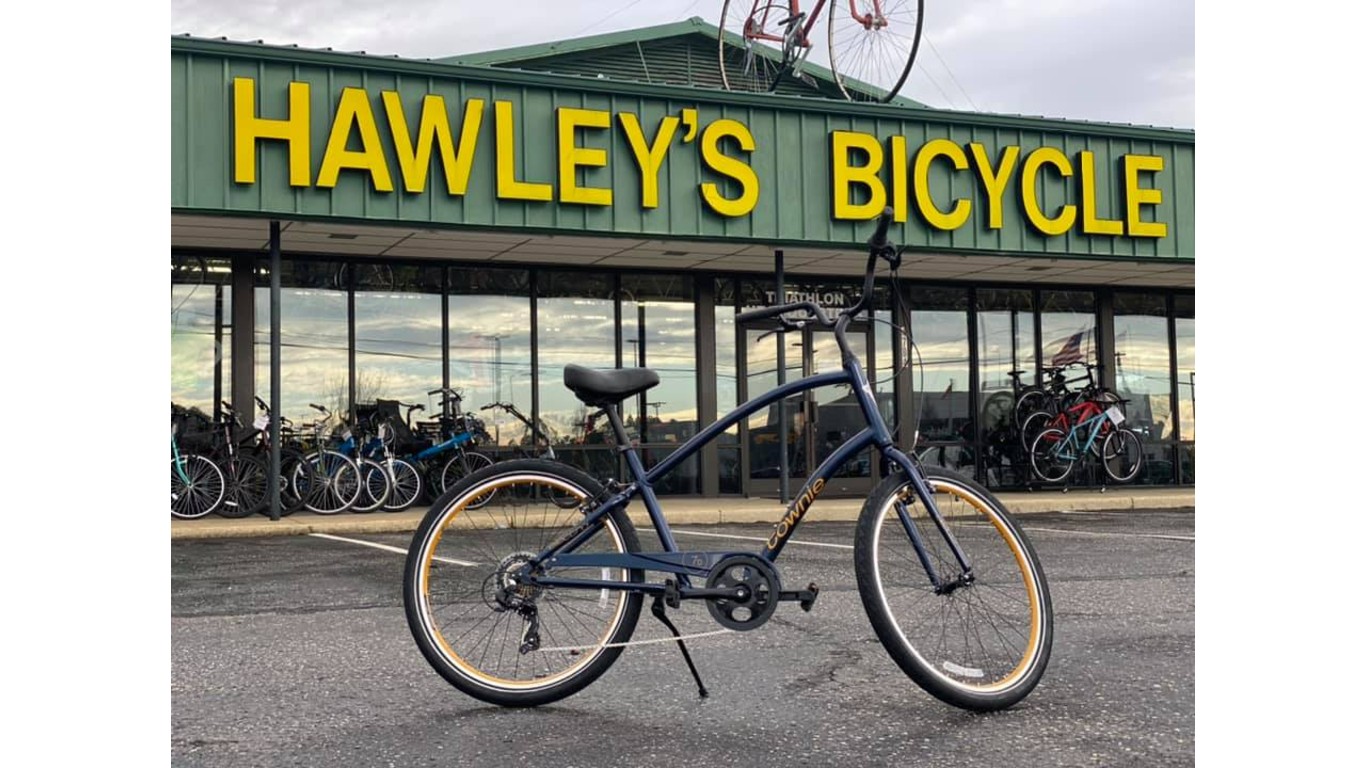
4. Fayetteville, North Carolina
> Bike score: 33.2
> Commuters who travel to work by bike: 0.2% — #85 out of 100 largest cities
> Population: 210,432

3. Birmingham, Alabama
> Bike score: 30.7
> Commuters who travel to work by bike: 0.3% — #77 out of 100 largest cities
> Population: 212,297

2. Nashville-Davidson, Tennessee
> Bike score: 29.7
> Commuters who travel to work by bike: 0.2% — #85 out of 100 largest cities
> Population: 663,750
[in-text-ad-2]
1. Winston-Salem, North Carolina
> Bike score: 29.2
> Commuters who travel to work by bike: 0.2% — #85 out of 100 largest cities
> Population: 244,115
The Average American Has No Idea How Much Money You Can Make Today (Sponsor)
The last few years made people forget how much banks and CD’s can pay. Meanwhile, interest rates have spiked and many can afford to pay you much more, but most are keeping yields low and hoping you won’t notice.
But there is good news. To win qualified customers, some accounts are paying almost 10x the national average! That’s an incredible way to keep your money safe and earn more at the same time. Our top pick for high yield savings accounts includes other benefits as well. You can earn up to 3.80% with a Checking & Savings Account today Sign up and get up to $300 with direct deposit. No account fees. FDIC Insured.
Click here to see how much more you could be earning on your savings today. It takes just a few minutes to open an account to make your money work for you.
Our top pick for high yield savings accounts includes other benefits as well. You can earn up to 4.00% with a Checking & Savings Account from Sofi. Sign up and get up to $300 with direct deposit. No account fees. FDIC Insured.
Thank you for reading! Have some feedback for us?
Contact the 24/7 Wall St. editorial team.
 24/7 Wall St.
24/7 Wall St.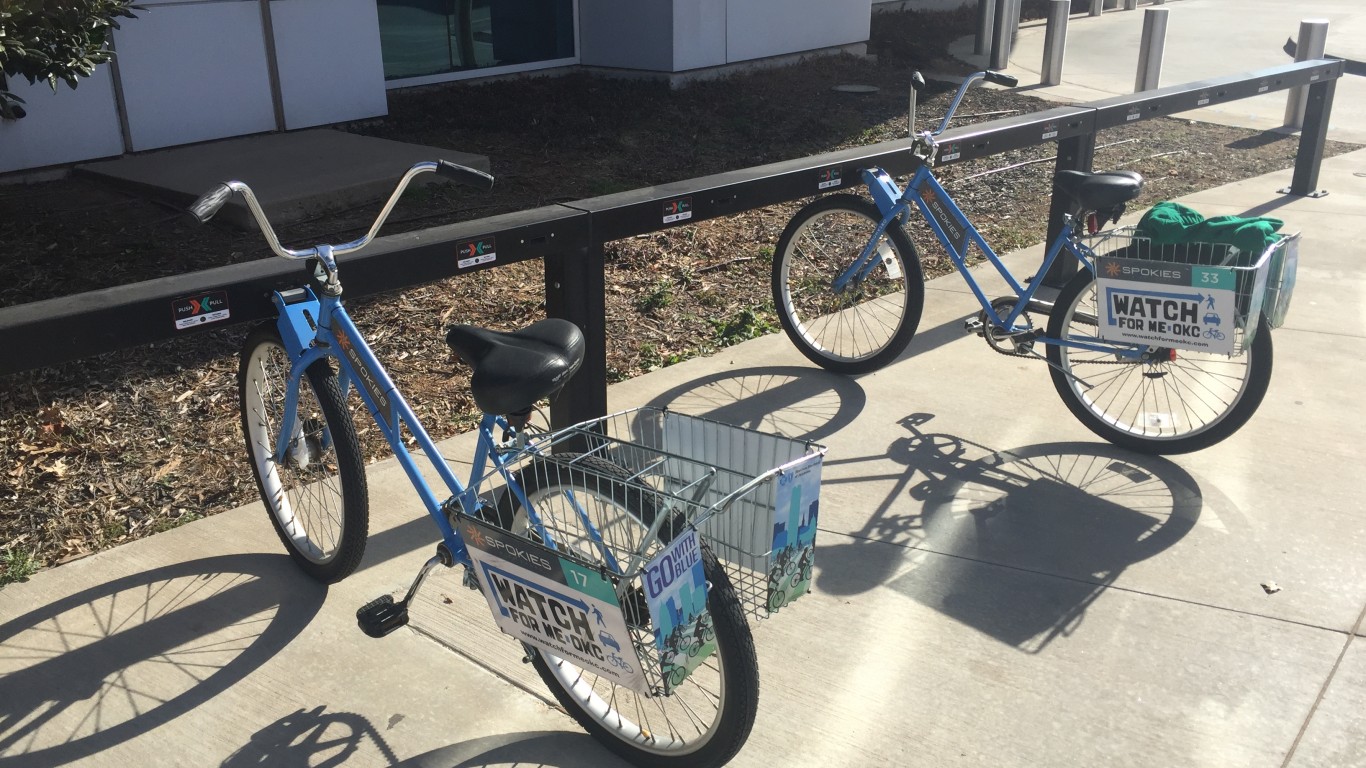
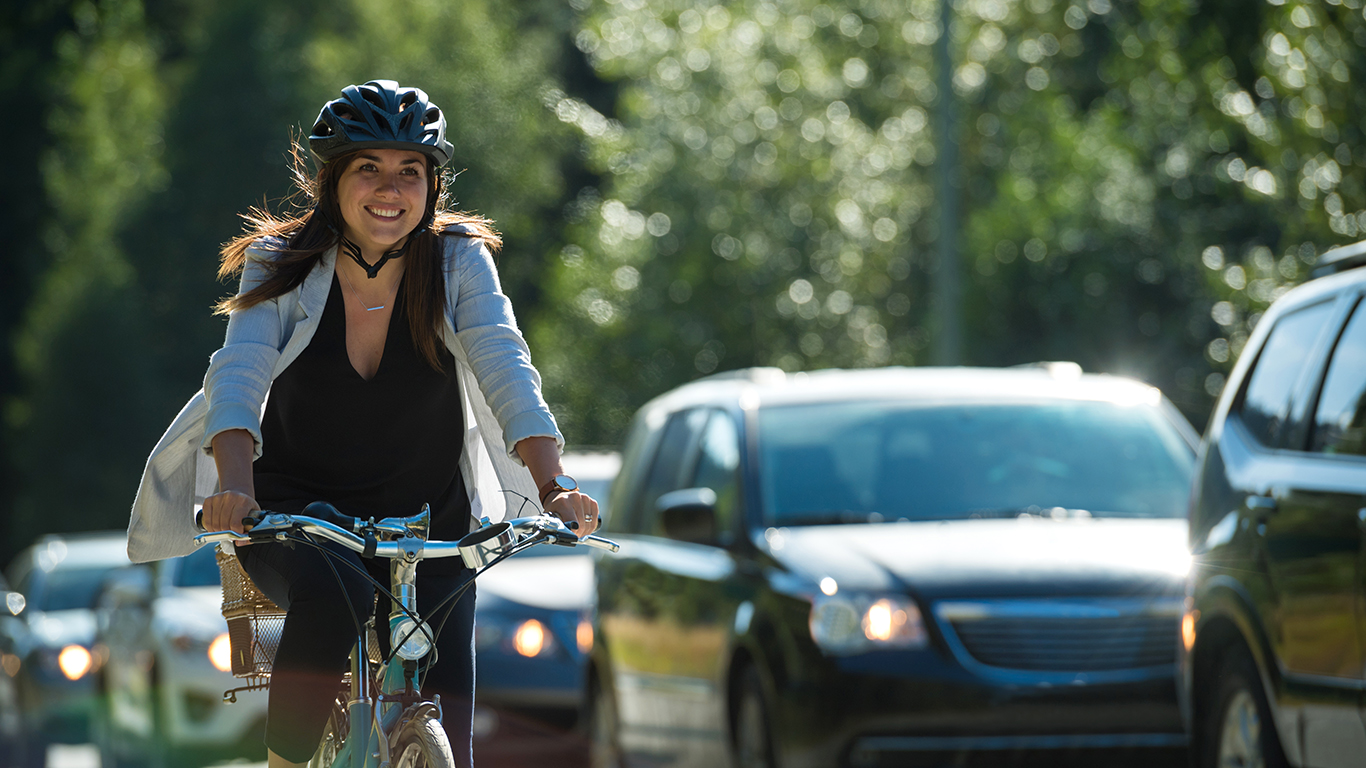 24/7 Wall St.
24/7 Wall St.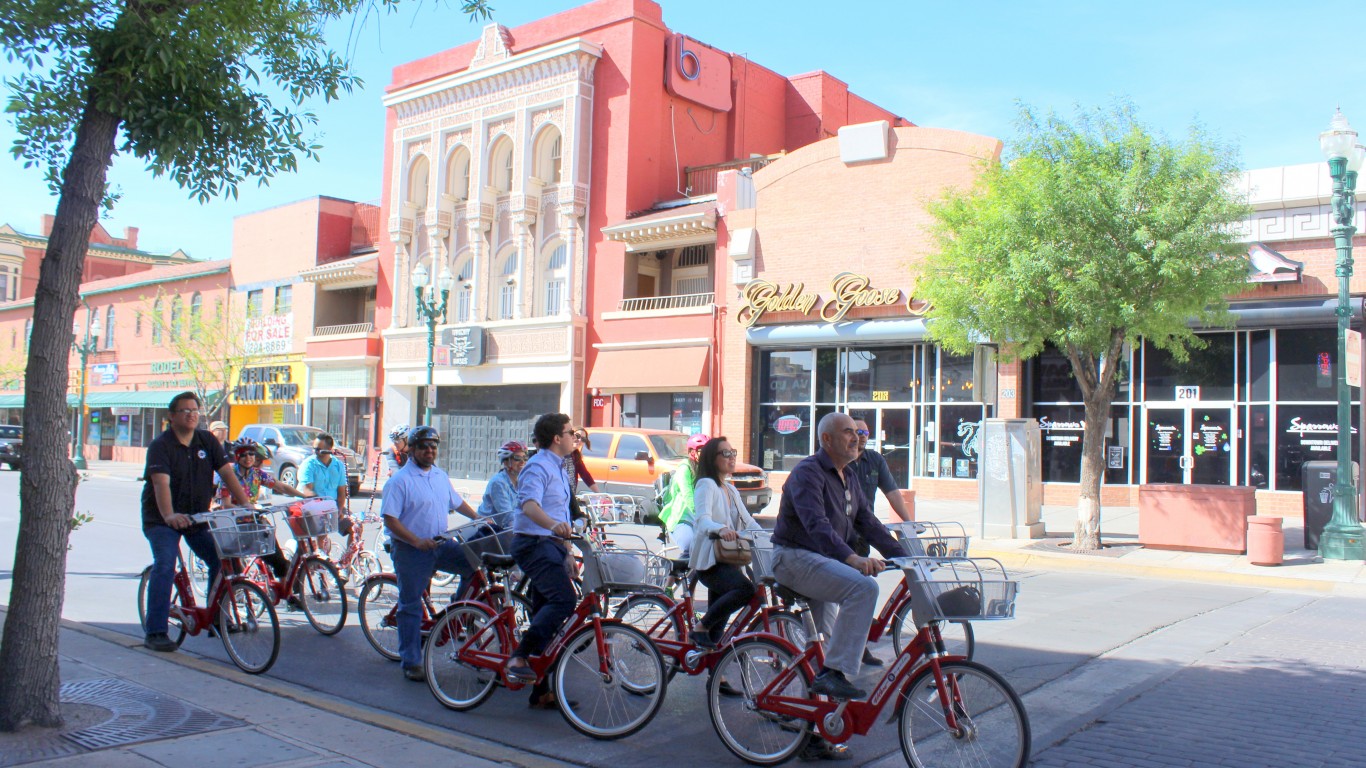
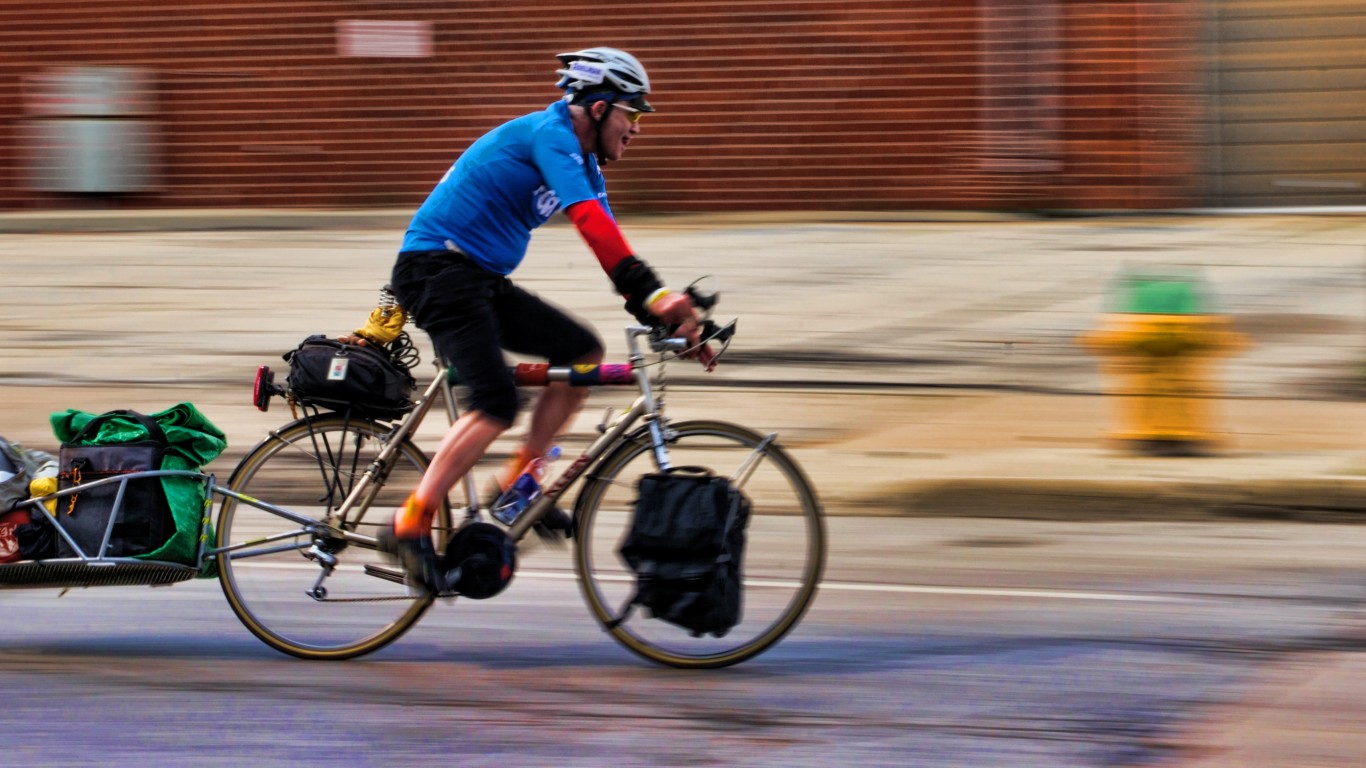
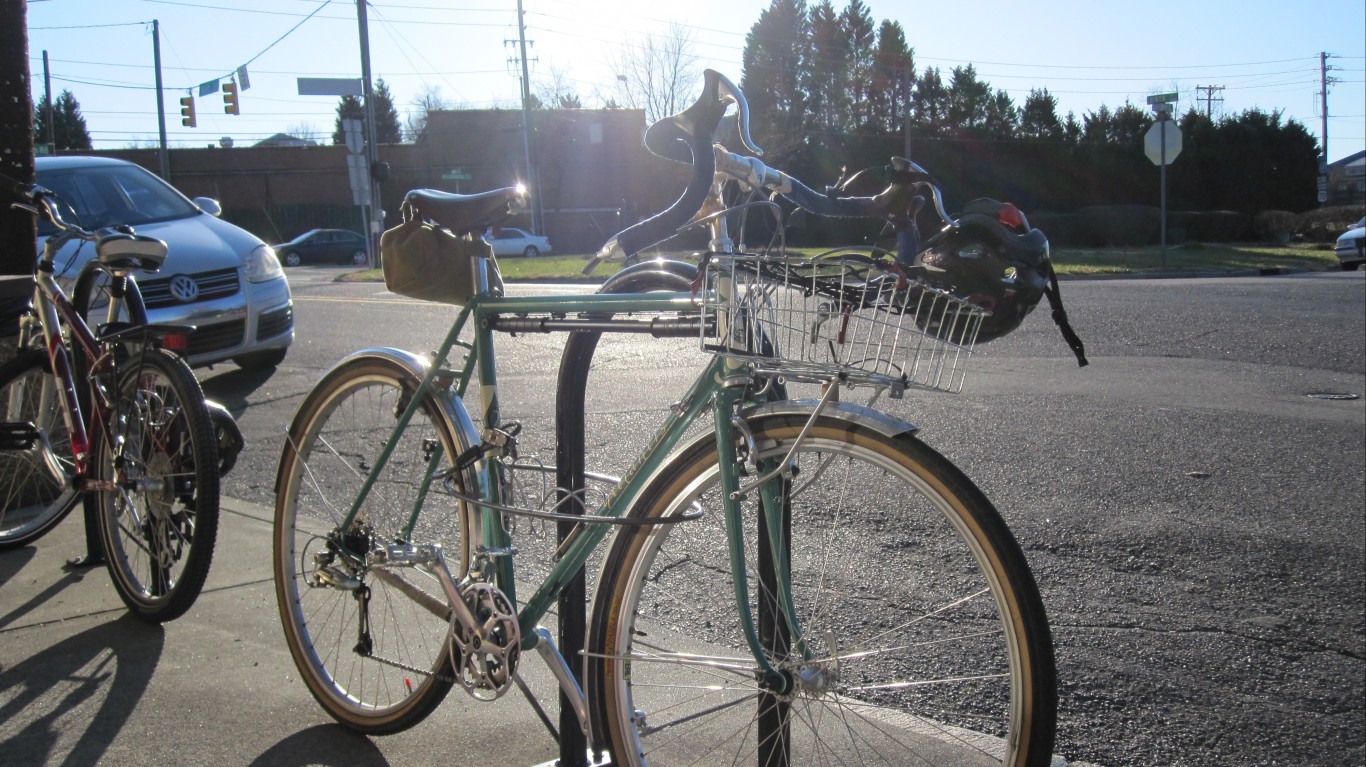
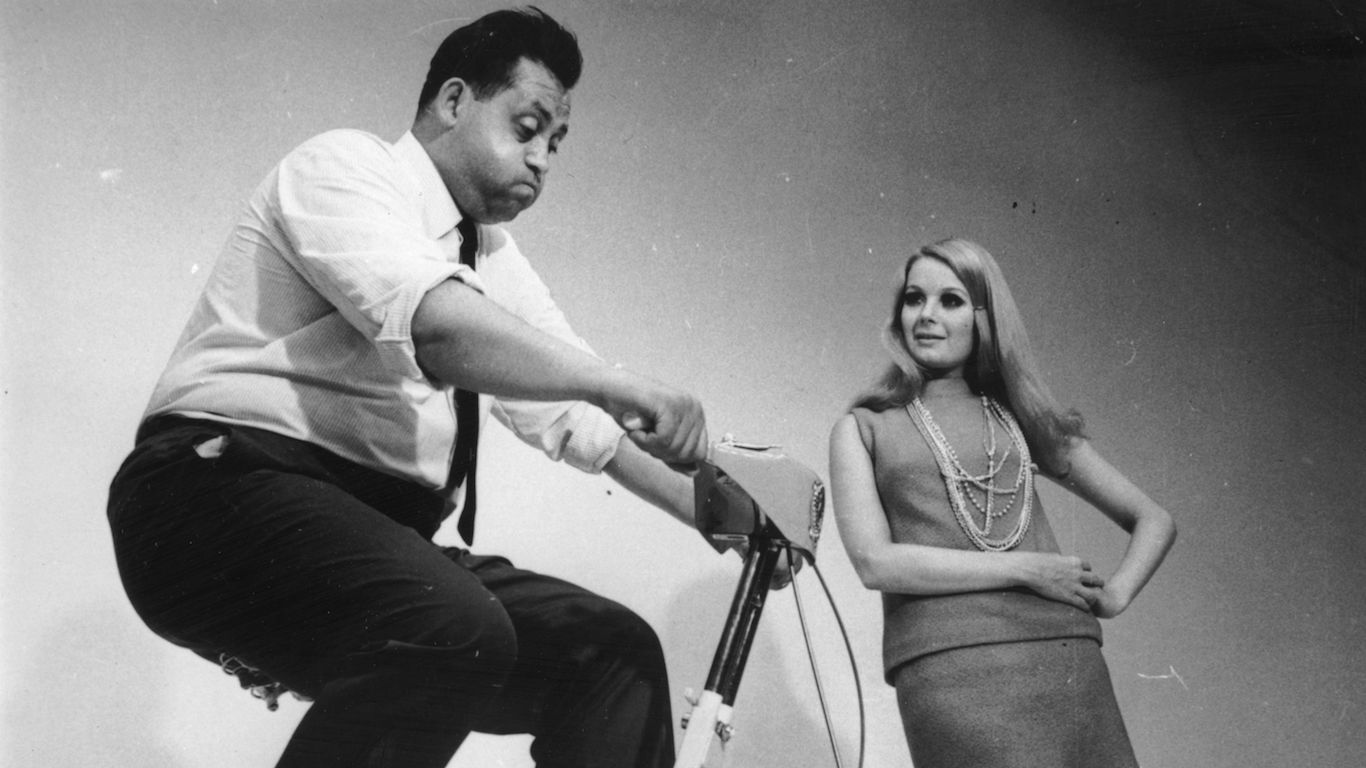 24/7 Wall St.
24/7 Wall St.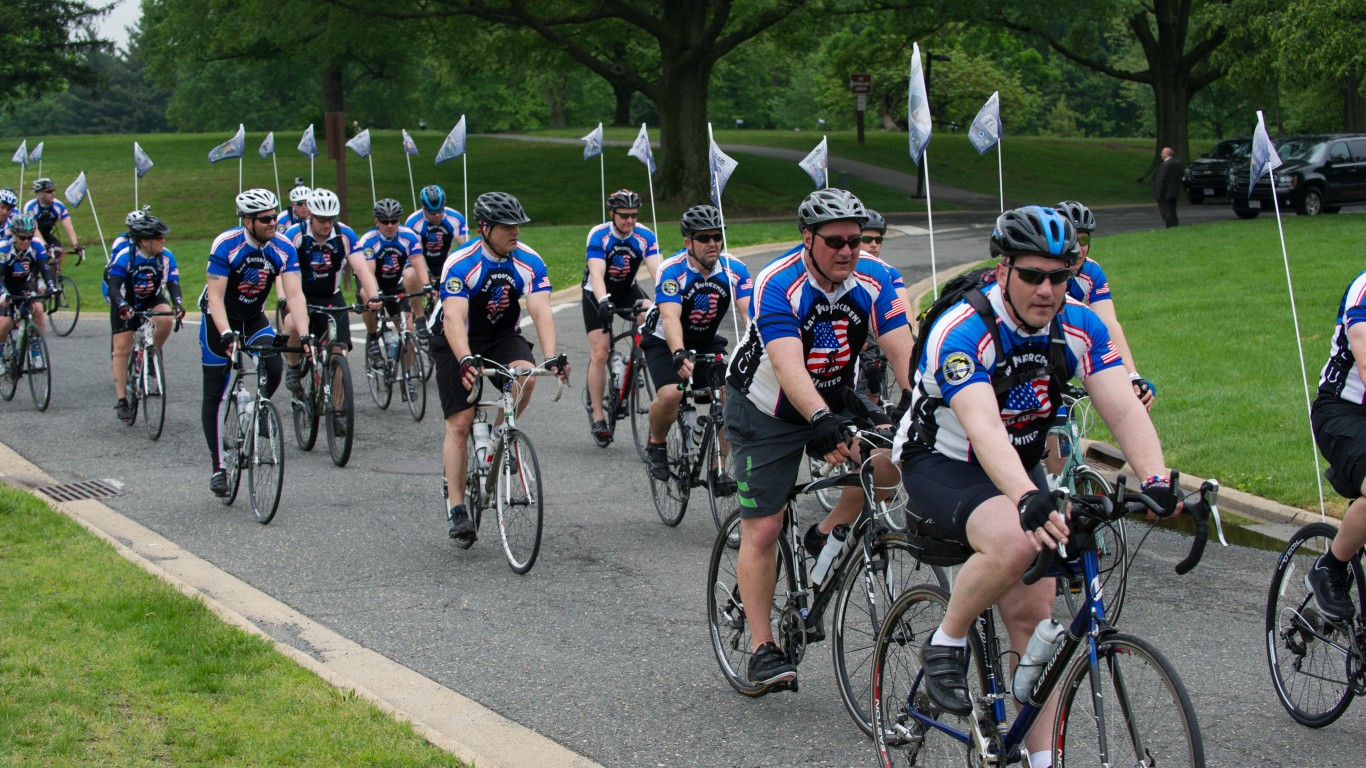
 24/7 Wall St.
24/7 Wall St.